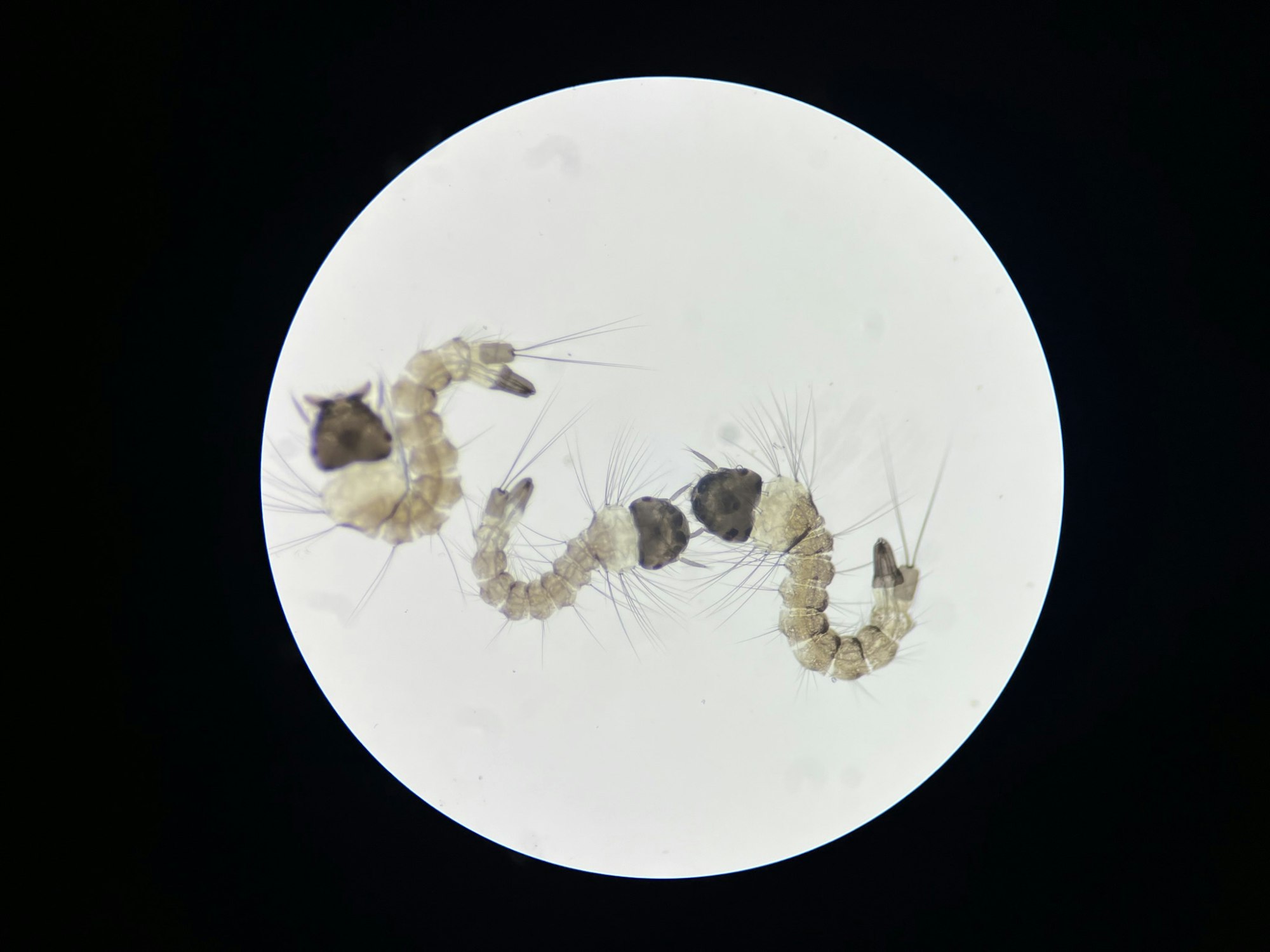2024 Mosquito Surveillance
Adult Mosquitoes (carbon-dioxide trap data)

Adult mosquito abundance began to rise in April, which is typical in the spring, but overall numbers remain low. Culex erythrothorax has only been collected a few times in traps in 2024, although on average it is the most abundant mosquito in April. This mosquito breeds in freshwater tule ponds and marshes. The most frequently collected mosquito in April was Culex pipiens, at near average numbers. This is a common mosquito in San Mateo County and a vector of West Nile virus.
The following table and graphs show the average number of adult mosquitoes collected per carbon dioxide-baited trap per night during Aprilcompared to the five year average for the six most common mosquito species in San Mateo County.
| Species | April 2024 | 5-year April average |
|---|---|---|
| _Culex pipiens_ | 2.1 | 2.2 |
| _Culex tarsalis_ | 0.3 | 1.2 |
| _Culiseta incidens_ | 2.1 | 1.3 |
| _Culex erythrothorax_ | <0.1 | 3.2 |
| _Aedes sierrensis_ | 1.4 | 2.0 |
| _Aedes washinoi_ | 1.4 | 2.9 |
This chart shows the average number of mosquitoes collected per trap during 2024
This chart shows the 5-year average number of mosquitoes collected per trap night by month for the previous 5 years. Data are shown for the six most common species found in San Mateo County.
Larval Mosquitoes (collections from water sources)

During April, larval surveillance focused on monitoring seasonal natural sources, such as freshwater impounds and marshes, while continuing to check backyard sources. Occasional rainy days in April kept water sources abundant throughout the county. District staff collected 181 larval samples in April. Technicians use a dipper to take a sample of water and visually inspect it for mosquito larvae. If larvae are present, the sample is taken back to the District laboratory for species identification.
The most frequently occurring species, in 78% of samples, was Culiseta incidens. This mosquito is found year-round in San Mateo County in many urban sources, especially fountains and fishponds. Another commonly collected species was Culex pipiens (11% of samples), which breeds in similar sources as Cs. incidens. Culex tarsalis was found in 14% of samples and breeds in a variety of freshwater sources such as marshes, ponds, and ditches. Culiseta species are not known to transmit human diseases in this area. In contrast, Culex species are an important vector of West Nile virus. Controlling mosquitoes while they are in the larval stage is the best way to prevent disease during the summer months.
Page last reviewed: May 8, 2024
